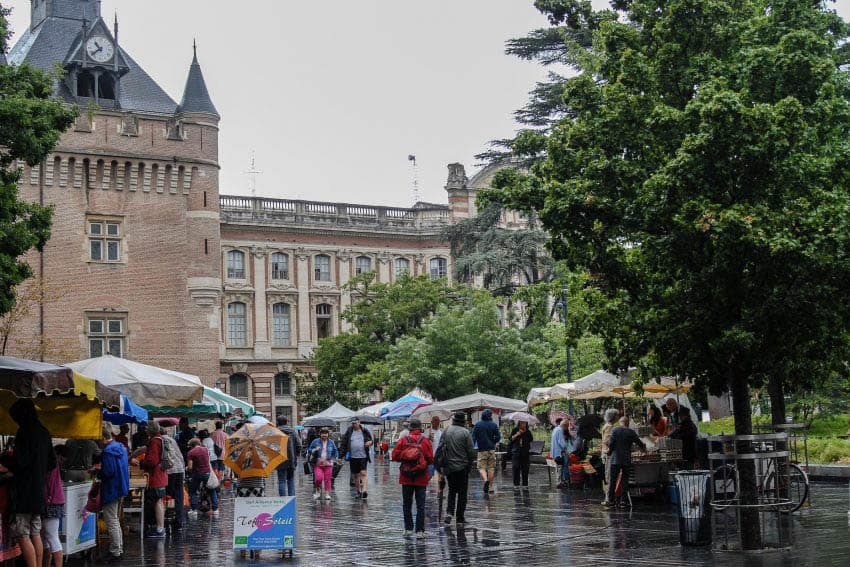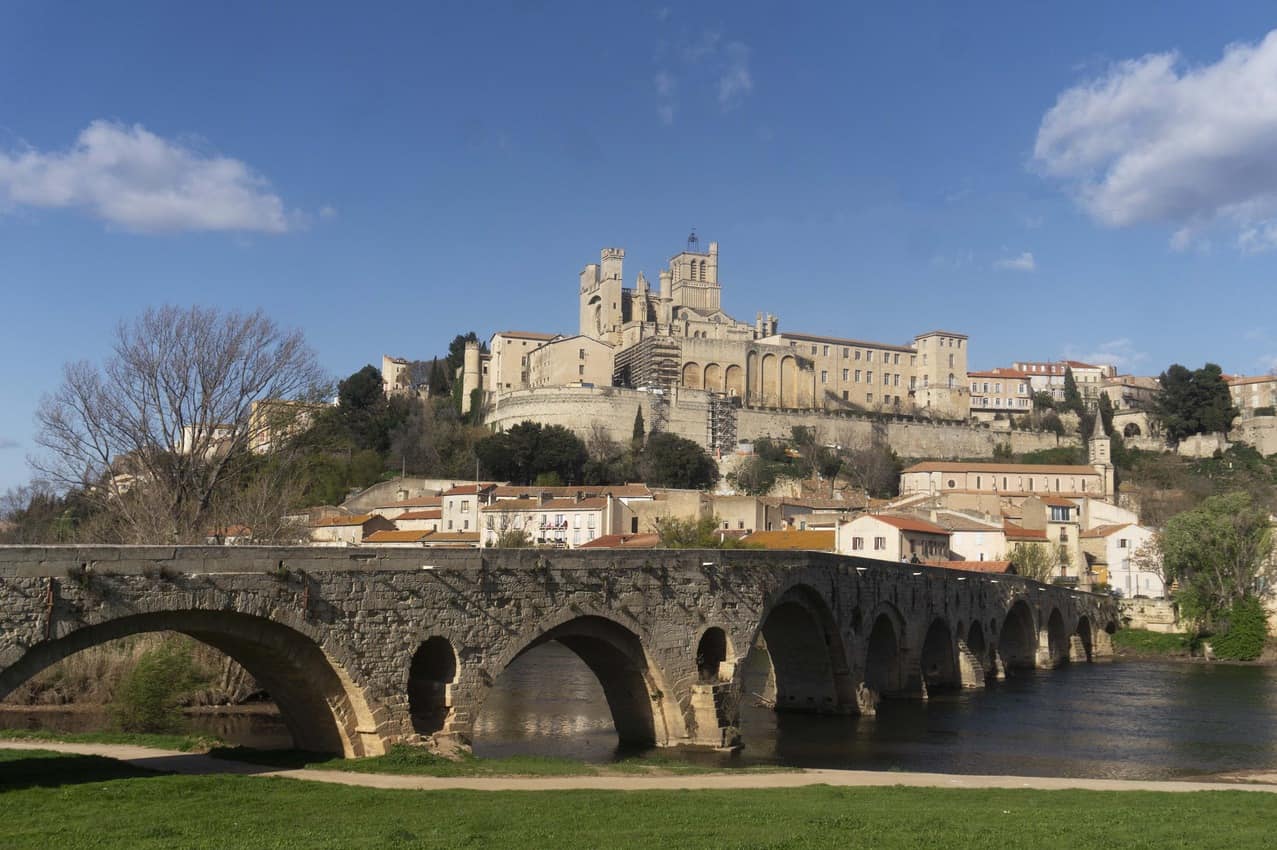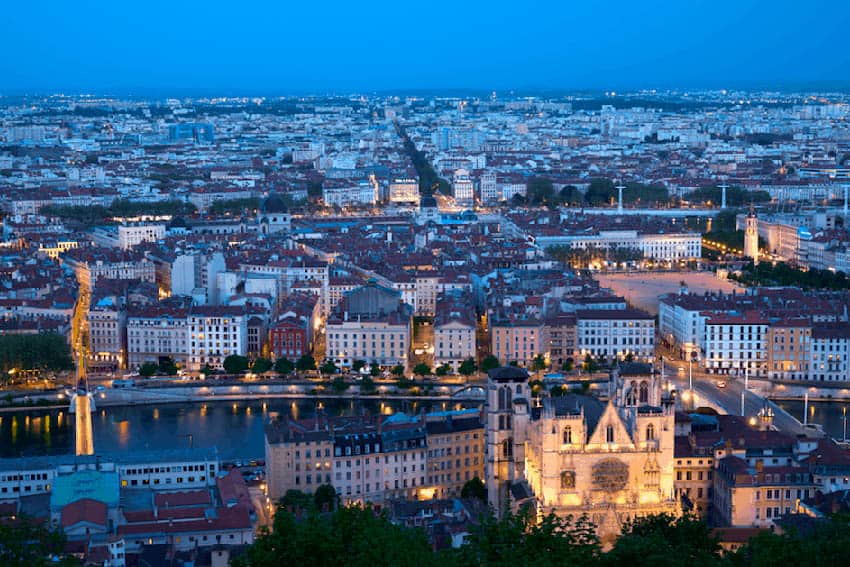Castle Hopping Back in Time – France’s Loire Valley
By Christopher Ludgate
Staring down at the itinerary for my upcoming trip, I was impressed to see a much dreamed about trip to the French countryside all mapped out. Travel options today can easily arouse any fantasy into a reality. The possibilities get my appetite going.
While multi-destination is not for everyone, it is easier than ever, whether on a whim or with some fancy planning. The logistics were a little complex, but with the helpful expertise of Atout France, I was well on my way to a rendezvous back in time to the Loire Valley and a whirlwind go at castle hopping.
It was a plan that had us swinging from a countryside vineyard down to a medieval dungeon, then wetting our whistles and wandering with the peacocks at Da Vinci’s Renaissance garden.
We marveled at the views of Villandry. Before long we set sail and sipped champagne on the Loire River and then dialed it back to a troglodyte château where the night skies were made for gazing.
Fast-Track to the Cradle of Royalty
As the sun rose over Paris, my flight descended onto the runway and I was off to meet my travel companion by the gate. The aroma of warm chocolate croissants from the nearby espresso counter filled my nose, so I fetched a couple as my companion readied our Rail Passes which she reserved for us through raileurope.com.
The tempting variety of French connections available are accessible from the airport in some way, including some of the newest fleet of high-speed lines, one of which soon had us bursting from the dark tunnel toward the Cradle of Royalty as quickly as a barista steamed an espresso.
The Loire Valley, located in the central region of France, is a sprawling countryside famous for vineyards and locally grown fare. But hundreds of years ago within this majestic region also sprouted magnificent castles which once belonged to French Royalty like François1st and other elite who hailed back in Medieval and Renaissance times.
The history housed in these epic châteaux would suffice any Francophile’s library. Our minds sometimes wandered from our informed guide, mesmerized by vibes and visions, savoring history’s bits and pieces.
City of Tours
Downtown Tours, where many of the alleyways are so narrow only a person can pass through them.
We arrived in the Loire Valley in less than two hours on the St Pierre des Corps bound train towards the city of Tours to explore and later pick up our rental car for our Loire road trip.
We encountered a welcoming bistro called Bistrot de la Tranchée where we shared stories and noshes which included locally sourced traditional favorites like airy Mille-Feuille and Loire rouge.
Châteaux du Amboise
We set out for Amboise early the next morning along the pastoral landscapes and free-roaming herds. I cracked my tinted window to the untainted colors to breathe the morning air, opening my mind up to embrace the rural peace.
The peaks and bastions of our destination appeared in the distance. Along that sidewalk we parked at was a stretch of little shops, where we wisely decided to stock up on hydration before embarking on the enormous façade that stood just beyond, Royal Château du Amboise.
Walking up to the postern gate, we entered the courtyard behind the castle where notable royalty once held court. King Françoise – a.k.a. the ‘Renaissance King’ – began his reign here in 1515 at the young age of 20 when dynastic law pointed to him after Queen Anne of Brittany and King Lois XII left no heir to the throne.
After Henry II’s, whose chambers are preserved here, the Château du Amboise became just a place of passage for the famous like Catherine de Medici and the Bourbon Kings.
A View of the Valley
We met our guide in the meticulously manicured gardens that were in line with the high-quality artistic sensibilities Françoise was known for. These gardens spread out from St. Hubert’s, the intensely ornately stain-glass chapel, around to one of the fullest panoramic views of the Valley.
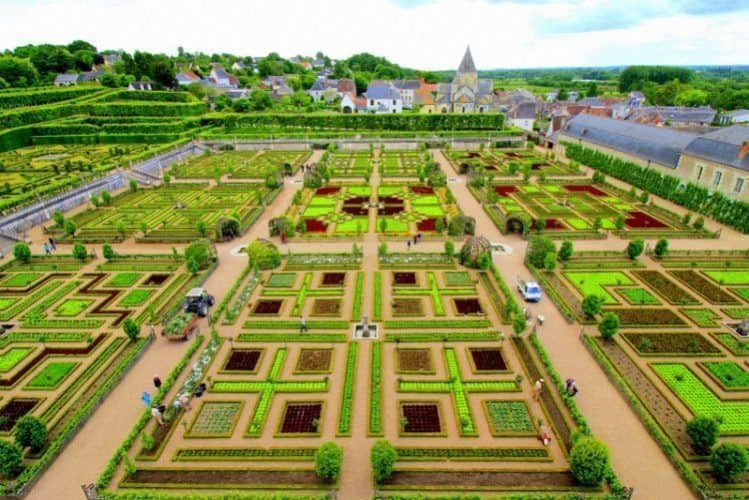
Within the remaining wings of the once five times larger fortress is a timeline of changing styles with royal crests and symbols, thrones and tapestries. Françoise 1st was known to have a penchant for luxury, especially of the Italian kind.
This is evident in his portraits and his artistic choices, and even some of the company he kept. Our guide pointed out how décor evolved from Gothic times through the Renaissance.
We made our way onto the steep outlook upon the very stone that the Huguenots were once tossed off of. There’s a vision to ponder. Finishing things off on the rooftop granted the opportunity for an up-close view of the front of the castle and the ultimate view of the River. But what we learned was lurking below also proved intriguing.
A Secret Path to da Vinci
A 400 meter stroll down the narrow road leads to Château du Clos Lucé. I wondered if there was a connection.
The guide assured there is! Somewhat recently discovered beneath this road is a secret tunnel – dilapidated now – that connected the two fortresses.
It is believed by scholars that King François used it to pay clandestine visits to his close friend, Leonardo da Vinci, whom he welcomed at the residence to live the remainder of his old life and to be “free to dream, to love, and be inspired.”
The two story pink tufa building of Clos Lucé is stoked in history. It served as a sanctuary to Anne of Brittany, the Duke of Angoulême, and was indeed the place where da Vinci took his last breath in 1519.Erected in 1471 around an existing foundation from the 1100’s, it was meant as a tributary to the Valleys. Its vast gardens were an ideal place for the nature-loving da Vinci.
Within these unsullied 2.5 acre grounds, da Vinci’s genius is brought to life in many interactive re-creations of his innovative ideas like the robotic lion which was astounding to see in modern day. Wandering the wood and streams, there was a spirit of divine simplicity. The casual joy of making friends with an unexpected peacock – my first time – was unforgettable.
Chambord
One of the most recognizable castles in the world is Château de Chambord with its blend of traditional French medieval and classical Renaissance architecture. Boasting its own zip code, it’s the kind of thing you see with its towering bastions and say ‘Now that’s a castle!”
In its day, never housing anyone, it served only as symbol of wealth and power for François 1st. One of the many fairy-tale highlights, speculated to have been designed by da Vinci, is the double helix staircase that actually hides a third helix at its peak.
Chocolates and Wine by the Castles
This area in Amboise has a bustling village with cafes and specialty shops worth strolling through. At a late lunch while doing some people watching in the lovely Patisserie Bigot, we delighted in farm fresh quiche with mesclun greens and then found ourselves surrounded in the in-house chocolatier shop which we happily surrendered to.
Geared up for a sunset stroll in the gardens and ripe for wine tasting, we arrived at Maison des Vins de Cheverny at Château de Cheverny, a castle built in the early to mid 1600’s and whose gardens and a winery thrive today.

Legend has it that here Francois the 1st introduced the Romarantin grape – a sister to Chardonnay – to the Loire to flourish. Maison des Vins allows a fun, informal freedom to tastings.
For a few euros, a digital chip with an assigned allotment was placed beneath our glasses before making our way around large ambient lit cylinders and placing our glasses beneath a spout of whichever nectar of the gods we wanted while a sampling was subtracted from the chip. How brilliant!
A Diversion in Cognac
One afternoon, we hit the road, and I soon found myself in the once bedroom of four-year old François 1st in Cognac, France. This royal château happens to also be where the stuff we call cognac was born in 1765 by Baron Otard. “The lower vaults of the Château on the banks of the River Charente, provide a constant temperature and humidity, important factors in the ageing of eaux-de-vie,” our guide explained before leading us into the dark depths wrought with mold and spider webs that looked primeval.
But these are the defenders of cognac keeping harm at bay and the integrity of the spirit safe. With no prior idea of the stringent process that goes into this concoction, I came away with a bottle and a whole new respect for it
Also known as chateau country, the Loire has many special places to recoup after a day of sightseeing. Since we were not staying in any one place for long, we got to sample of some gorgeous gems along the way.
During a night in Cheverny at Château du Breuil, a classic sanctuary nestled within 100 acres, I gazed beyond the billowing curtains into the countryside above the c. 19 chapel that sat below my room’s window while digesting a sumptuous in-house meal.
In Amboise, on a secluded hillside amongst troglodyte passages stands Château de Perreux, a castle once overtaken by Nazis in WWII. Their Michelin Star chef, Ludovic welcomed us with warm fragrant beer bread. “Authenticity, peace, and quietness” are what the hotel takes pride in offering. In the morning, the ethereal grounds beckoned us to wander and take in some yoga. An ideal place to retreat, swim, and wander for days, I settled for the scrumptious beer bread recipe before having to depart.
Paris Opera and Moulin Rouge
Fast forwarding back to Paris on the express train and still inspired with things past we booked a stay at the landmark Paris Opera Hotel Hilton and tickets to world-renowned Moulin Rouge. Both opening simultaneously with the Eiffel Tower, c 1880s, the Paris Opera’s centerpiece, “Le Grand Salon,” was recently renovated to emulate that original Belle Époque essence. The sublime atmosphere with magnificently detailed décor was transporting.
Modern day welcomes casual after work crowds, afternoon tea, and, of course, late night romance. With a staff providing stellar service, the family friendly hotel that housed the Red Cross during the wars offers modern chic rooms overlooking the Paris streets.
As I walked through Paris toward Moulin Rouge that evening, I imagined others who might have taken the same route 125 years ago. In the distance, the club’s windmill spun hypnotically. I felt déjà vu being escorted into the theater, as we became bathed in deep red light and velvety air. The sound of champagne corks continued as the curtains rose to a spellbinding pièce de résistance of an experience of a lifetime.
Links:
Atout France: atout-france.fr/
Rail Europe: www.raileurope-world.com/
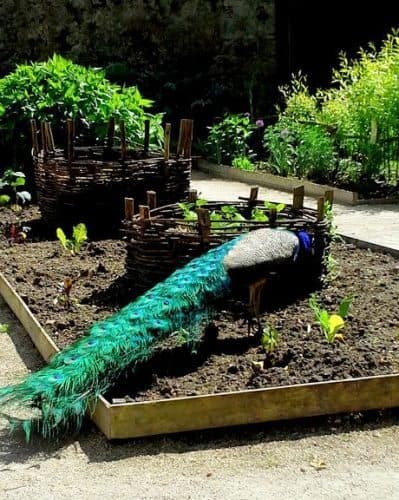
Chateau Breuil: www.chateau-hotel-du-breuil.com/en/
Chateaux Perreux: www.chateaudeperreux.fr/en/index.php
Paris Opera: www.hiltonparisoperahotel.com/default-en.html
Moulin Rouge: www.moulinrouge.fr/?lang=en
Royal Chateau Amboise: www.chateau-amboise.com/en/
Chateau du Clos Luce: www.vinci-closluce.com/en
Chateau Villandry: www.chateauvillandry.fr/
Chambord: chambord.org/en/
Chateau Cheverny: www.chateau-cheverny.fr/en/
Maison des Vins de Cheverny: www.maisondesvinsdecheverny.fr/en/
Baron Otard: www.baronotard.com/lda/
Bistro de la Tranchee: www.charles-barrier.fr/index.php?page=le-bistrot-de-la-tranchee
Maison Bigot: www.maisonbigot-amboise.com/
- JAMNOLA and Sazerac House: Celebrate New Orleans - July 30, 2022
- New Orleans’ High-tech World War II Museum - July 23, 2022
- Montreal: Eclectic Arts and Culture - May 9, 2022


